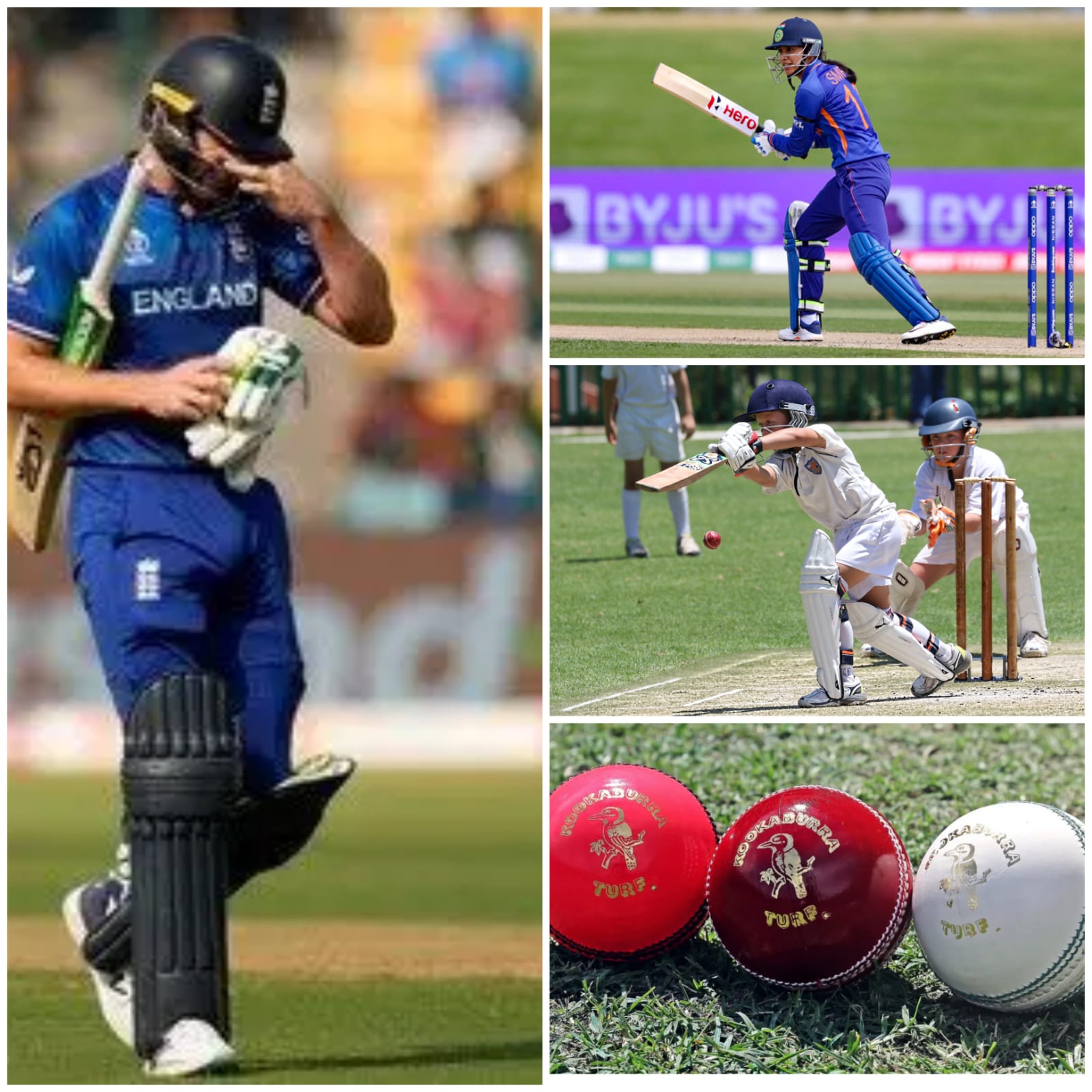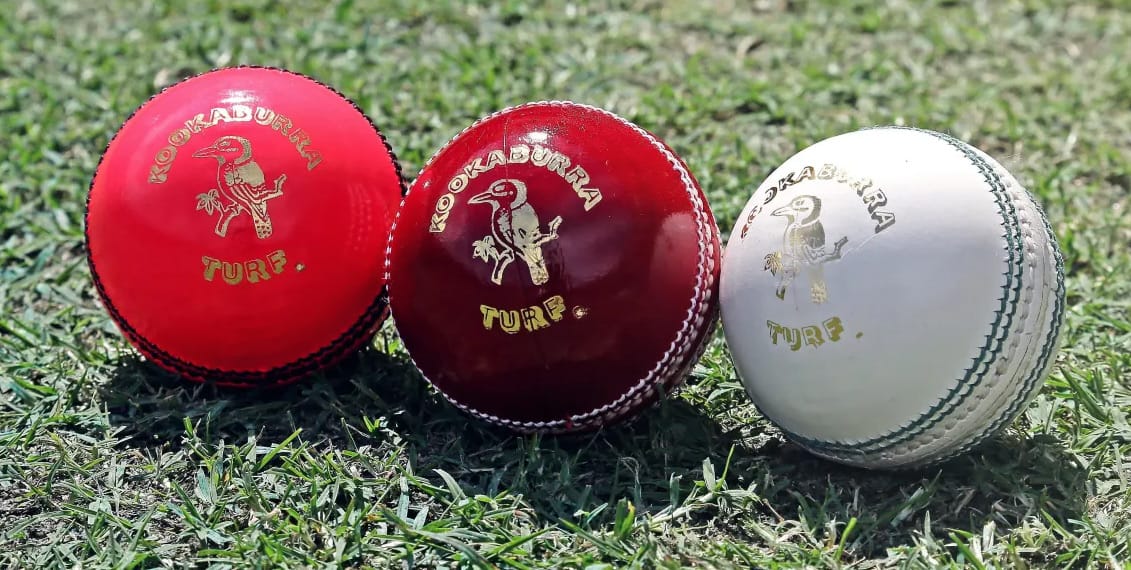Are you curious about how much a cricket ball weighs? Understanding the weight of a cricket ball is essential for players, coaches, and cricket enthusiasts alike.
In this article, we’ll explore the significance of cricket ball weight, its standard measurements, and why it matters in the game of cricket.
What is the Official weight of a cricket ball?

For detailed information on the dimensions and mass of a cricket ball, please refer to the following table:
| Particulars | Men’s Cricket | Women’s Cricket | Junior Cricket- Under 13 |
| Weight | 5.5 to 5.75 ounces (156-163 grams) | 4.94 to 5.31 ounces (140 -151 grams) | 4.69 to 5.06 ounces (133-144 grams) |
| Circumference of ball | 8.81 to 9 inches (22.4-22.9 cm) | 8.25 to 8.88 inches (21-22.5 cm) | 8.06 to 8.69 inches (20.5 to 22.00 cm) |
Looking at the table, you might ask why are there variations in the balls weight and circumference (size)?
While there is a standard weight range for cricket balls, variations may exist due to factors such as manufacturing processes and materials used. However, these variations are typically minor and should not significantly affect the performance of the ball during gameplay.
Umpires may inspect and approve cricket balls before and during matches to ensure they meet the required standards.
Different Cricket Ball Comparison: Red Ball vs. White Ball vs. Pink Ball

| Particulars | Red Ball | White Ball | Pink Ball |
| Used In | Test cricket and first-class matches | Limited-overs cricket like ODIs and T20s | Day-night Test matches |
| Weight | 5.5 – 5.75oz (156 – 163g) | 5.5 – 5.75oz (156 – 163g) | 5.5 – 5.75oz (156 – 163g) |
| Circumference | 8.81 – 9in (22.4 – 22.9cm) | 8.81 – 9in (22.4 – 22.9cm) | 8.81 – 9in (22.4 – 22.9cm) |
| Material | Cork core covered in leather | Cork core covered in white leather with a lacquer coating | Cork core covered in pink leather with a lacquer coating |
| Color | Cherry red | White | Pink |
| Behavior | Swings more due to a pronounced seam and leather surface. | Swings significantly more initially due to the lacquer coating but deteriorates faster. | Designed to maintain its color and behavior longer under lights compared to the white ball. |
Standards of International Cricket Council regarding cricket ball
In professional cricket, governing bodies like the International Cricket Council (ICC) set standards and regulations for cricket equipment, including the weight of the ball.
According to these regulations, a cricket ball must fall within the specified weight range to be considered legal for use in matches sanctioned by the ICC or other cricketing bodies.
1. Taking Care of the Ball:
- The umpires control all the game balls, making sure they’re in good shape and ready to play.
- When a wicket falls, the break starts, or plays stops for any reason; the umpire takes the ball and keeps it safe.
2. New Balls:
- Both captains can ask for a brand new ball at the start of each innings, unless agreed otherwise before the game.
- In longer games (lasting more than a day), the fielding captain can request a new ball after 80 overs have been bowled with the old one. The umpire lets everyone know when a new ball comes into play.
3. Lost or Damaged Balls:
- If the ball gets lost or the umpires decide it’s too worn out, they’ll replace it with a similar ball that’s had about the same amount of wear.
4. Different Balls for Different Players:
- Not all cricket balls are created equal! As you can see from the table, men’s, women’s, and junior (under 13) cricket use different ball sizes and weights.
Why Does Cricket Ball Weight Matter?
The weight of a cricket ball impacts various aspects of the game, including its bounce, swing, and spin. A heavier ball tends to bounce higher and swing less, while a lighter ball may swing more but bounce lower.
Bowlers rely on the weight of the ball to deliver accurate and effective deliveries, while batsmen need to adjust their shots based on the ball’s weight and movement.
Choosing the Right Cricket Ball
When selecting a cricket ball for practice or competition, it’s essential to consider its weight along with other factors such as quality, durability, and suitability for the playing conditions.
Players should choose a ball that feels comfortable and allows them to perform at their best while complying with the rules of the game.
Conclusion
In conclusion, the weight of a cricket ball plays a vital role in the dynamics of the game, influencing factors such as bounce, swing, and spin.
By adhering to standard weight regulations and selecting the right ball for practice and matches, players can ensure a fair and enjoyable cricketing experience for all involved.
Whether you’re a seasoned cricketer or a newcomer to the sport, understanding the significance of cricket ball weight is essential for improving your skills and appreciation of the game.
James Paul is a former first-class cricketer and passionate cricket analyst. His decades of experience on the field and his love for the game shape his insights into the strategies and personalities that define world-class cricket.

I don’t think the title of your article matches the content lol. Just kidding, mainly because I had some doubts after reading the article.